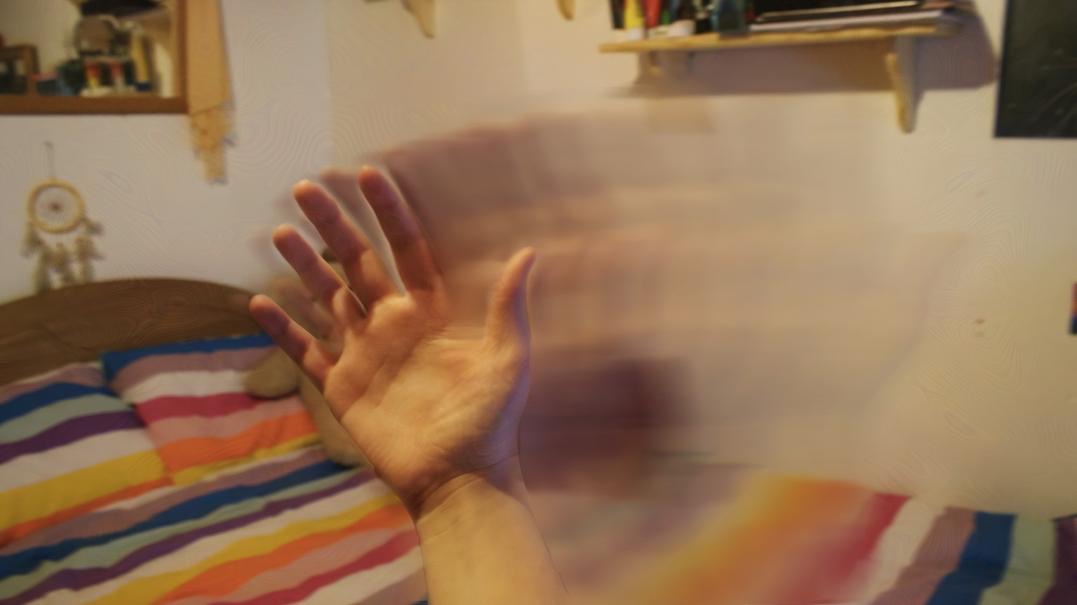Tracers

Tracers are the experience of visual trails of varying lengths and opacity being left behind moving objects in a manner that is similar to those found in long exposure photography. [1] They will usually manifest as exactly the same colour of the moving object producing it or can sometimes be a randomly selected colour of their own.
A relatively consistent way to reproduce this visual effect is to simply move one's hand in front of their face or throw an object under the influence of a moderate dose of psychedelics.
This effect is capable of manifesting itself across the 4 different levels of intensity described below:
Level 1
Mild
-
Level 2
Distinct
-
Level 3
Strong
-
Level 4
All-encompassing
-
Tracers are often accompanied by other coinciding effects, such as drifting and after images. They are most commonly induced under the influence of mild dosages of psychedelic [2] [3] compounds, such as LSD [4] [5] [6] [7] , psilocybin, and mescaline. However, they can also occur less commonly under the influence of MDMA and certain dissociatives, such as 3-MeO-PCP or DXM.
Related Reports
References
- Dubois, J., & VanRullen, R. (2011). Visual trails: do the doors of perception open periodically?. PLoS biology, 9(5), e1001056. | https://doi.org/10.1371/journal.pbio.1001056
- Abraham, H. D., Mccann, U. D., & Ricaurte, G. A. (2002). Psychedelic drugs. | http://citeseerx.ist.psu.edu/viewdoc/summary?doi=10.1.1.623.299
- Anderson, W. H., & O'Malley, J. E. (1972). Trifluoperazine for the trailing phenomenon. JAMA, 220(9), 1244-1245. | https://doi.org/10.1001/jama.1972.03200090066017
- Asher, H. (1971). Trailing” phenomenon–a long-lasting LSD side effect. Am J Psychiatry, 127(9), 1233-4. | https://doi.org/10.1176/ajp.127.9.1233
- Schwartz, K. (1997). Nefazodone and visual side effects. The American journal of psychiatry, 154(7), 1038. | https://www.ncbi.nlm.nih.gov/pubmed/9210763
- Abraham, H. D. (1983). Visual phenomenology of the LSD flashback. Arch Gen Psychiatry, 40(8), 886-887. | https://doi.org/10.1001/archpsyc.1983.01790070074009
- Abraham, H. D., & Wolf, E. (1988). Visual function in past users of LSD: Psychophysical findings. Journal of Abnormal Psychology, 97(4), 443. | http://psycnet.apa.org/doi/10.1037/0021-843X.97.4.443